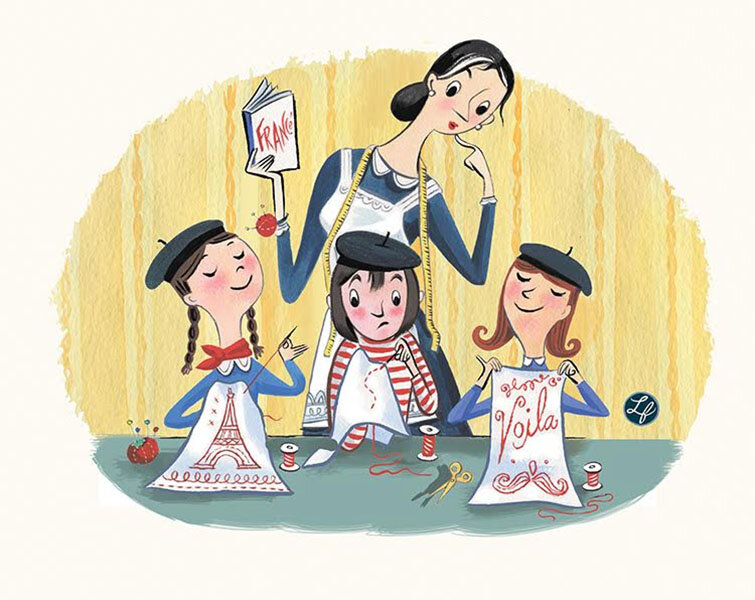French lessons in pride and humility
Loading...
My mother was a gifted seamstress who could take a picture from Vogue and convert it into a pattern. When I was a child, she often took me with her when she went to buy material, and I would lose myself in the huge books of Simplicity patterns. I liked the pictures of children’s clothes – they gave me ideas for the paper dolls I endlessly made. I also liked using the scraps from her work to make dresses for my real dolls, which usually consisted of cutting a hole in the piece of cloth for the doll’s head and tying a ribbon around its waist. Perhaps that was why my mother signed me up for a French sewing class.
French sewing took place on Friday afternoons at my elementary school. Back then, Friday was a half day, so it meant bringing your lunch and staying after school. The class had nothing to do with doll clothes or Simplicity patterns. No, in French sewing we made hand towels, place mats, napkins, and the like, using linen in pastel colors. Every Friday I toiled away, my pink linen hand towel growing grubbier and grubbier as I tried to follow the delicate lines of the Napoleonic letter “N” (the first letter of my mother’s name) with white embroidery thread. I scrunched the linen too tight and I constantly had to rethread my needle, licking the thread and turning it a murky gray.
French sewing was taught by the redoubtable Mademoiselle Lambert, who also taught us the French language. We called the stitches by their French names: point mouche, point d’épine, point de Cordonnet. I didn’t have any trouble with that. I was a star in regular French class.
French sewing, however, was another matter. Each project, it seemed, began with the drawn work for the borders, pulling out the horizontal linen threads, then gathering the vertical ones in little triangles. My attempts at this were shaky, and many times I had to go to Mademoiselle Lambert and have her undo my mistakes. It was humiliating. Here was I, one of her best pupils, incompetent. I watched glumly as, with a slight frown, she bent her head over my work, white wings in her black hair, her silver thimble winking, deftly repairing my clumsiness.
This was Mademoiselle Lambert in a different context. It was disorienting. I missed her brisk “Très bien!” after I successfully sight-translated a passage in our French reader. All I got now was a tired “Voílà” as she handed back my work.
But there was more. Gradually I realized that some of the girls who stumbled when reading the adventures of Jean and Suzanne aloud, and with whom I was often impatient, could make perfect French knots. Their back stitches were even, and the pastel linens of their napkins and towels never looked crushed or dirty. Mademoiselle Lambert smiled at their work. She exclaimed, “Très bien!” In French sewing, they were the stars. And dimly I began to understand how they must feel in regular French class when the words wouldn’t come.
I can’t say that French sewing made me instantly empathetic. I still liked the gratification of things that came easily to me. I was still impatient. Although I would eventually learn to sew well enough to complete the easier patterns in the Simplicity books, I could never sew like my mother, reinforcing the lesson of those long-ago Friday afternoons.
Everyone has different talents. Sewing is a skill that requires those qualities I have always struggled to learn: patience, attention to detail, a willingness to work and rework.
And even, perhaps, a touch of humility.







